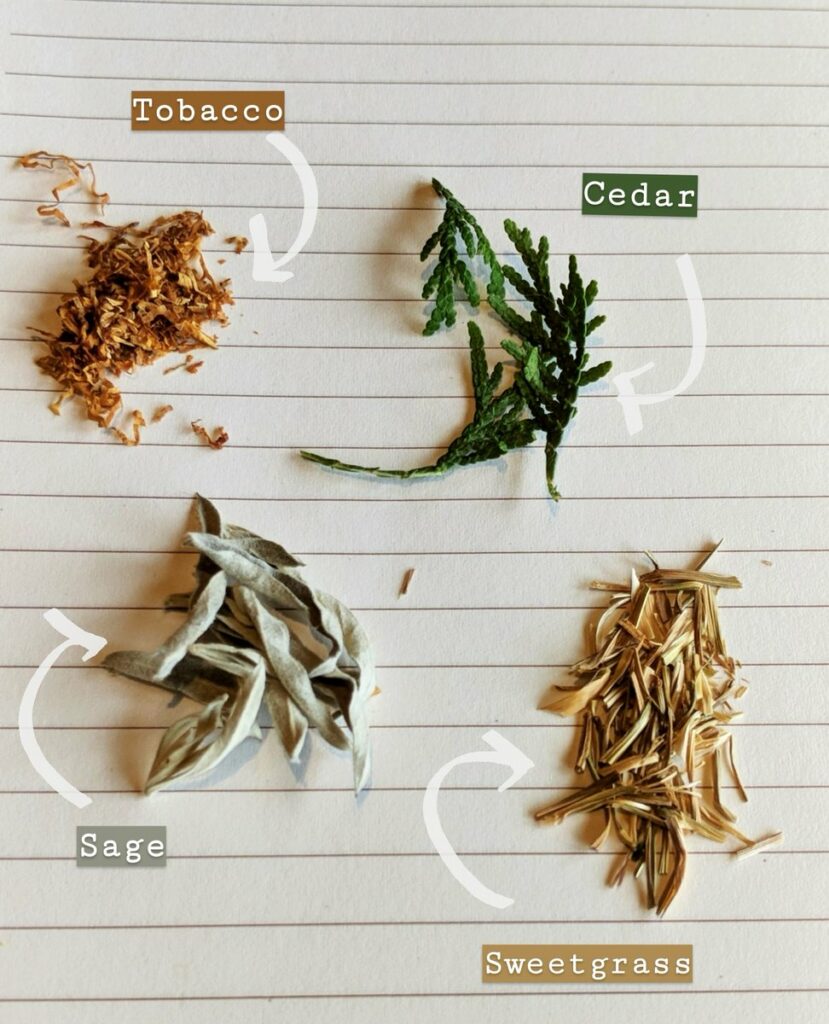| Lesson Name & Time (Minutes Allotted): | Indigenous Medicines/Relationship to Land (40 mins) |
| Learning Standards: Curricular Competencies | CC1: explain the significance of personal or local events, objects, peoples, or places CC2: ask questions, make inferences, and draw conclusions about the content and features of different types of sources |
| Learning Standards: Content | diverse cultures, backgrounds, and perspectives within the local and other communitiesrelationship between a community and its environment |
| Instructional Objectives (SWBAT…): | Describe which plants are the four traditional medicines in Secwépemc Territory. Discuss the importance of the land to indigenous communities. |
| Assessment: | Exit ticket: colour and label a worksheet which shows the four medicines in a medicine wheel structure. |
| Teaching Strategies: | Peer support: students can ask their neighbours for assistance. Visual examples: emotion poster to assist with identifying how they feel. Poster of medicines: assist with helping remember the look of each one its name. Longer pauses: giving a longer moment for students who need more time to give an answer to a question. |
| Materials: | Four Sacred Medicines: Sage, Cedar, Sweetgrass, and Tobacco. Emotions poster. Worksheet. Pencil Crayons. “Be a Good Ancestor” by Gabrielle/Leona Prince. |
| LESSON ACTIVITIES | |
| Introduction/Hook: | The teacher will read a story, “Be a Good Ancestor” by Gabrielle/Leona Prince.The teacher will ask students ways they saw a connection between characters and the land.The teacher will ask students, “How is the land important to you?”The teacher will explain how they will be learning more about Indigenous peoples connection to land and indigenous ways of using plants as medicines. |
| Body: | The teacher will introduce the “Four Sacred Medicines” by bringing in the tangible items: tobacco, sage, sweetgrass, and cedar.The students will have a chance to hold each item one at a time. The teacher will ask students “how does the smell of Sage make you feel?” The teacher will discuss the importance of land to indigenous communitiesThe relationship with land is about reciprocity and respect. land gives itself and we return/give thanks.The teacher will point to a poster picture of each of the Sacred Medicines and have students repeat the name. The teacher will explain the worksheet expectations before calling students one by one to grab a worksheet and return to their desk. |
| Closure: | The students will complete the worksheet by labeling each of the four medicines and colouring them in. The students will hand in the completed worksheet to the hand-in box located on the teachers desk. |
